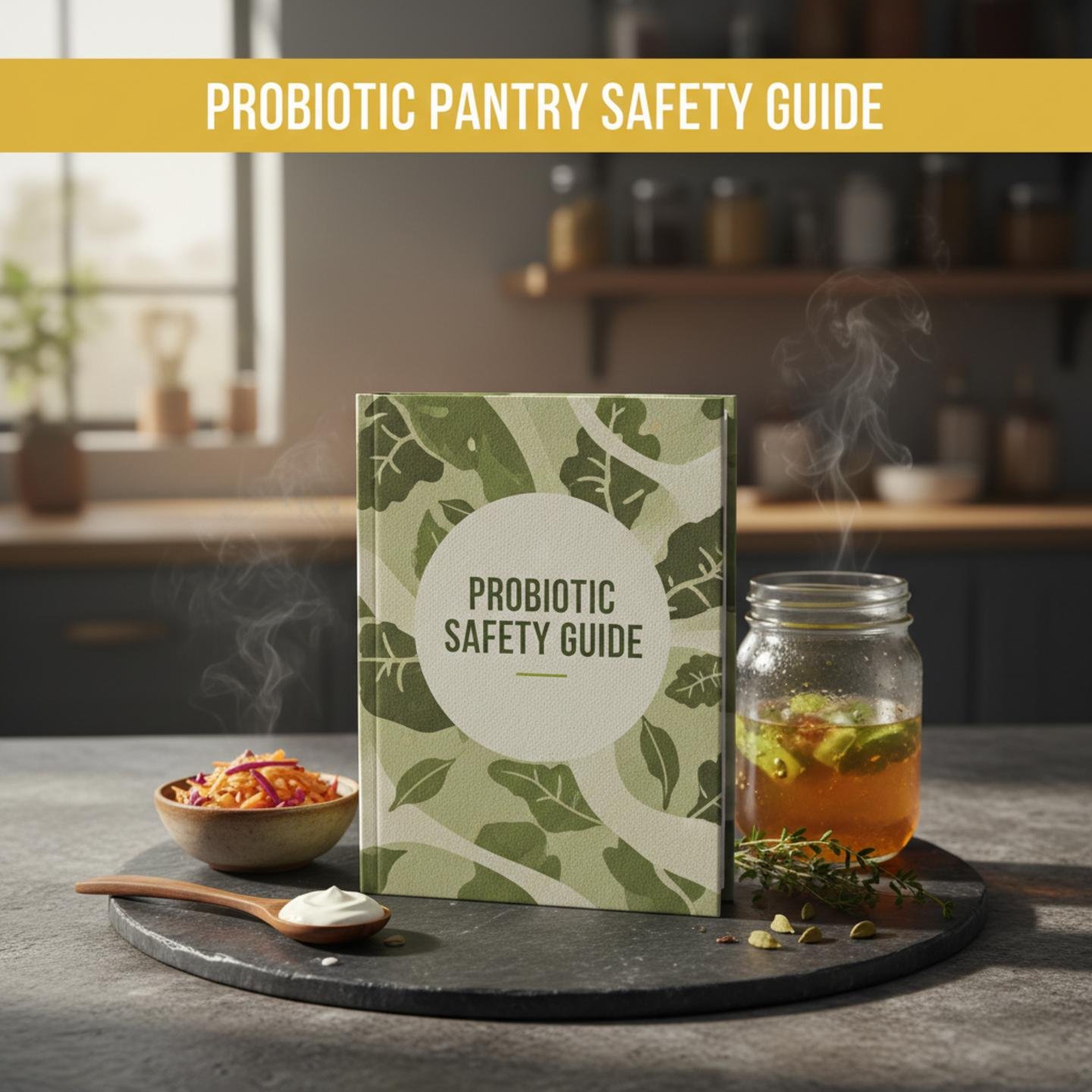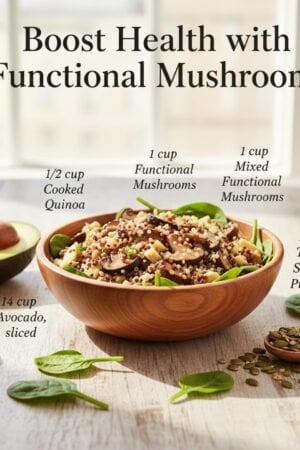A beginner-friendly recipe for quick fermented cabbage, a delicious and gut-healthy addition to your probiotic pantry. This recipe emphasizes safety and simplicity, providing a crunchy, tangy side dish.

Probiotic Pantry Safety Guide
A beginner-friendly recipe for quick fermented cabbage, a delicious and gut-healthy addition to your probiotic pantry. This recipe emphasizes safety and simplicity, providing a crunchy, tangy side dish.
Ingredients
- 1 medium green cabbage finely shredded
- 2 tablespoons sea salt non-iodized
- 1 teaspoon caraway seeds optional
Instructions
- Thoroughly clean and sterilize a one-quart wide-mouth jar and lid. Ensure all surfaces are free of soap residue.
- Finely shred the cabbage using a mandoline or sharp knife. Place the shredded cabbage in a large, clean mixing bowl.
- Add the sea salt and caraway seeds (if using) to the cabbage. Begin to massage the salt into the cabbage with clean hands. This process should take about 5-10 minutes, until the cabbage softens and releases a significant amount of liquid.
- Pack the cabbage and its released liquid tightly into the sterilized jar. Use a tamper or your fist to press down firmly, eliminating air pockets. Ensure the cabbage is fully submerged under its own brine. If not enough brine, you can add a small amount of non-chlorinated water mixed with a pinch of salt.
- Place a smaller jar or a fermentation weight on top of the cabbage to keep it submerged. Secure the lid loosely or use an airlock if you have one.
- Place the jar at room temperature (around 65-75°F or 18-24°C) for 3-7 days. Check daily to ensure the cabbage remains submerged. You may see bubbles forming, which indicates active fermentation.
- Taste the cabbage after 3 days. Once it reaches your desired level of tanginess and crunch, remove the weight and refrigerate. Enjoy as a side dish, topping, or ingredient in other recipes.
Notes
Ensure all equipment is thoroughly sterilized to prevent unwanted mold. Use non-iodized salt. Fermentation time varies with temperature; warmer environments ferment faster. Store in the refrigerator once fermentation is complete to slow the process.






